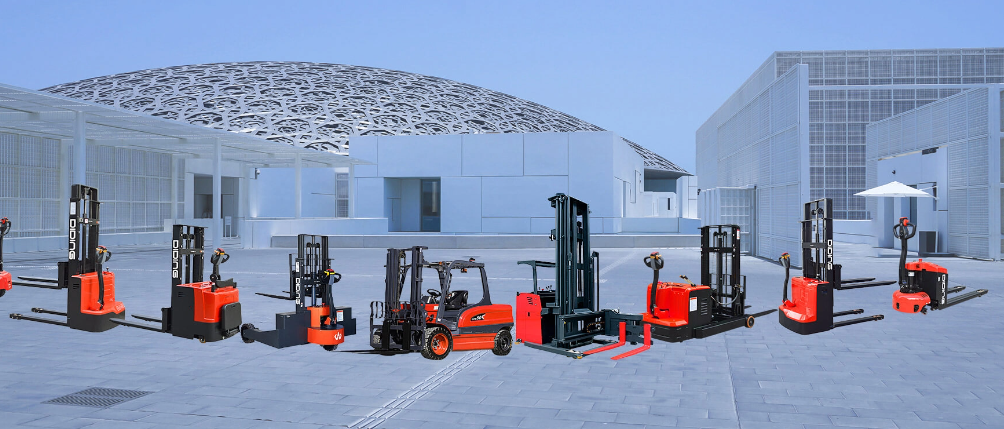GEMFG Electric Forklift Lithium Battery: Maximizing Efficiency and Durability in Material Handling Operations
Date: 2022-05-07 Categories: Articles Hits: 1087

In the fast-paced sectors of logistics, warehousing, and industrial material handling, the performance of electric forklifts is integral to operational continuity and productivity. Central to these vehicles is the power supply system, where the choice of battery directly influences efficiency, reliability, and total cost of ownership. GEMFG electric forklift lithium batteries are engineered to meet the rigorous demands of modern electric forklift applications, providing a robust, long-lasting, and maintenance-free power solution that outperforms traditional alternatives. These advanced lithium battery systems ensure that electric forklifts operate at peak performance throughout extended shifts, even in challenging conditions, making them an essential asset for warehouses, distribution centers, and manufacturing facilities.
The critical role of a high-performance lithium battery in electric forklift applications cannot be overstated. Electric forklifts require a consistent and high-power energy supply to handle heavy loads, frequent lifting, and extended operation hours. GEMFG’s lithium batteries are specifically designed to deliver high current output, exceptional cycle life, and rapid recharge capabilities, addressing the core needs of material handling equipment. Unlike conventional lead-acid batteries, lithium technology offers higher energy density, reduced weight, and zero maintenance, significantly enhancing the productivity and versatility of electric forklifts across various logistic environments.
To ensure stable and trouble-free operation, it is essential to adhere to proper usage protocols. Although GEMFG lithium batteries incorporate integrated protection mechanisms against overcurrent and short circuits, users should always verify that the connected equipment does not exceed the battery’s specified output limits. Overloading the battery with attachments or motors that demand excess current may activate protective cutoffs and impact long-term durability. Furthermore, all electrical connections must be secure and regularly inspected to prevent loose terminals or damaged wiring, which could lead to short circuits or energy loss. Proper installation and periodic checks are fundamental to maximizing safety and performance in demanding electric forklift applications.
Managing depth of discharge (DOD) is another crucial factor in preserving the functional lifespan of a lithium battery in electric forklifts. Maintaining the discharge level within a moderate range—typically between 50% and 70% for daily use—helps prevent accelerated degradation of the battery’s internal structure. Deep discharges on a regular basis can lead to premature capacity fade and reduce the number of operational cycles. For businesses that rely on electric forklifts for continuous material handling, adopting disciplined charging practices and avoiding full depletion can prolong service life, minimize downtime, and lower the total cost of ownership.
Routine monitoring of the battery’s key parameters is highly recommended to sustain optimal performance. Using diagnostic tools to measure voltage, capacity, and internal resistance can help detect potential issues such as cell imbalance or connector wear at an early stage. GEMFG lithium batteries are constructed to provide stable power with minimal self-discharge, yet scheduled inspections contribute significantly to reliability and safety in large-scale logistic operations.
When it comes to storage, appropriate measures are vital for maintaining battery health. If an electric forklift is expected to be idle for an extended period, the lithium battery should be stored at a state of charge between 40% and 60% in a clean, dry, and temperature-controlled environment. Ideal storage conditions involve temperatures between 5°C and 25°C, away from direct sunlight, moisture, or corrosive agents. These precautions help prevent irreversible capacity loss and preserve electrochemical stability. Additionally, performing a periodic maintenance cycle—such as a partial charge and discharge every few months—can reactivate the battery’s internal materials and ensure it remains ready for use.
GEMFG lithium batteries are built to endure the physical demands of warehouse and logistic settings, including vibration, shock, and variable loads. With rugged construction, intelligent thermal management, and high-quality LiFePO4 cells, these batteries offer a safe and durable power supply solution that stands up to intensive material handling tasks. Their compatibility with a wide range of electric forklift models makes them a versatile choice for upgrading existing fleets or specifying in new equipment.
In summary, the GEMFG electric forklift lithium battery combines advanced technology with practical design to deliver unmatched energy performance for the material handling industry. By following these guidelines for usage, monitoring, and storage, businesses can achieve greater energy efficiency, reduce operational costs, and enhance the productivity of their electric forklift investments. Choose GEMFG for a lithium battery solution that powers your logistics and warehousing operations with confidence and endurance.

 GiB 25.2-12.4EB
GiB 25.2-12.4EB  GiB 12-3SB
GiB 12-3SB  GiB 46.8-20EB
GiB 46.8-20EB  GiB 24-16RB
GiB 24-16RB  GiB 12-138SL
GiB 12-138SL  GiB 12-200
GiB 12-200  GiB 12-50
GiB 12-50  GiB 12-100
GiB 12-100  GiB 51R200
GiB 51R200  GiB 51R150
GiB 51R150  GiB 12.8-18GT
GiB 12.8-18GT  GiB 12-6SMB
GiB 12-6SMB  GiB 12-15ES
GiB 12-15ES  GiB 24-100
GiB 24-100  GiB 24-200
GiB 24-200  GiB 12-20MS
GiB 12-20MS  GiB 12-4MS
GiB 12-4MS  GiB 18-5.4DE
GiB 18-5.4DE  GiB 14.4-6.7OC
GiB 14.4-6.7OC  GiB 25.9-15XM
GiB 25.9-15XM  GiB 3.7-1.6HPC
GiB 3.7-1.6HPC  GiB 7.2-2.1SP
GiB 7.2-2.1SP  GiB 12-36SL
GiB 12-36SL  GiB 12-20SL
GiB 12-20SL  GiB 3.7-2.2SL
GiB 3.7-2.2SL  GiB 25.9-13SL
GiB 25.9-13SL  GiB 22.8-22FPV
GiB 22.8-22FPV  GiB 22.2-30FPV
GiB 22.2-30FPV  GiB 22.2-12FPV
GiB 22.2-12FPV  GiB 22.8-5FPV
GiB 22.8-5FPV  GiB 22.8-8FPV
GiB 22.8-8FPV  GiB 36-10.4RB
GiB 36-10.4RB  GiB 36-15SB
GiB 36-15SB  GiB 48-2PT
GiB 48-2PT  GiB 3.7-7.8RB
GiB 3.7-7.8RB  GiB 14.8-18RB
GiB 14.8-18RB  GiB 12-6SB
GiB 12-6SB  GiB 12-12SB
GiB 12-12SB  GiB 12-12SB
GiB 12-12SB  Lead-acid Battery | OPzV & OPz...
Lead-acid Battery | OPzV & OPz...